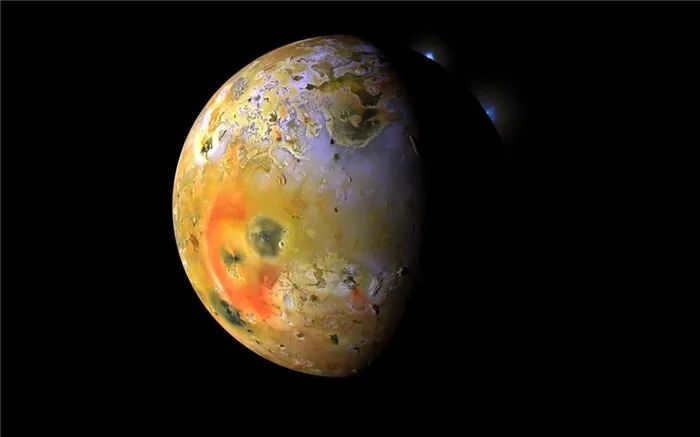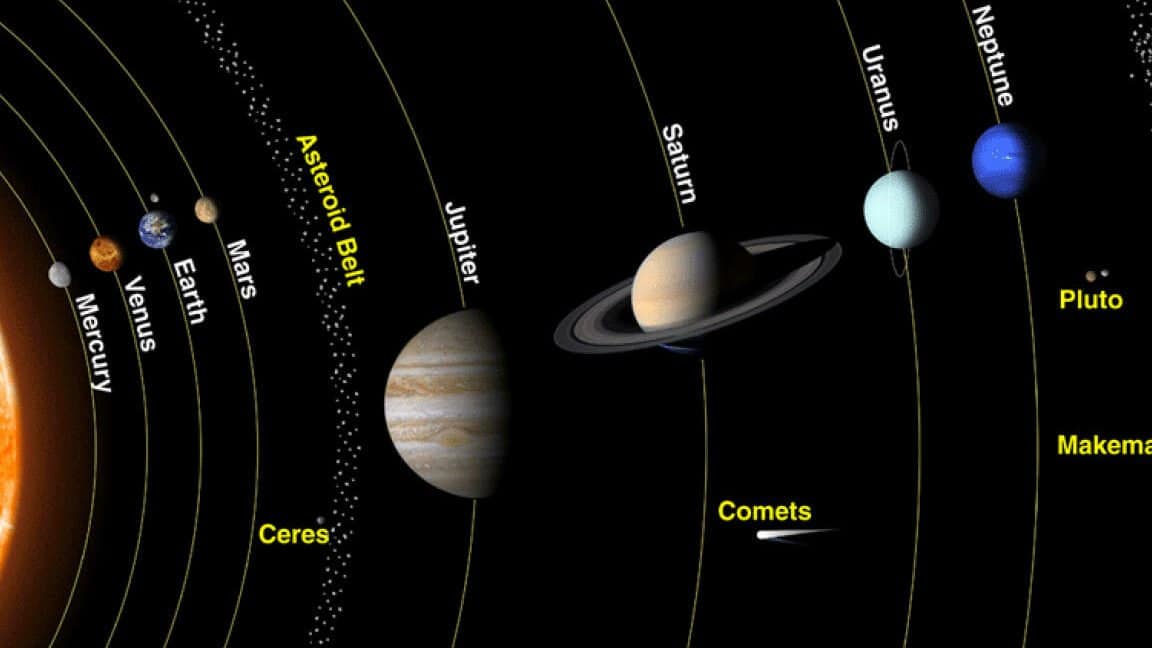Which of the major satellites has the lowest temperature, with summers lasting for 42 years, and which of them could potentially be suitable for human habitation?
There are a total of 200 satellites in our solar system, with an average of 25 moons for each planet. However, the Earth is an exception with only one moon. This is because only celestial bodies with significant mass and strong gravitational force can afford to have multiple satellites. Mercury and Venus have no satellites, while Mars only has two. On the other hand, Jupiter has a whopping 79 moons, and Saturn has 82. The ten largest satellites of the planets in our solar system are ranked in “My Planet”.
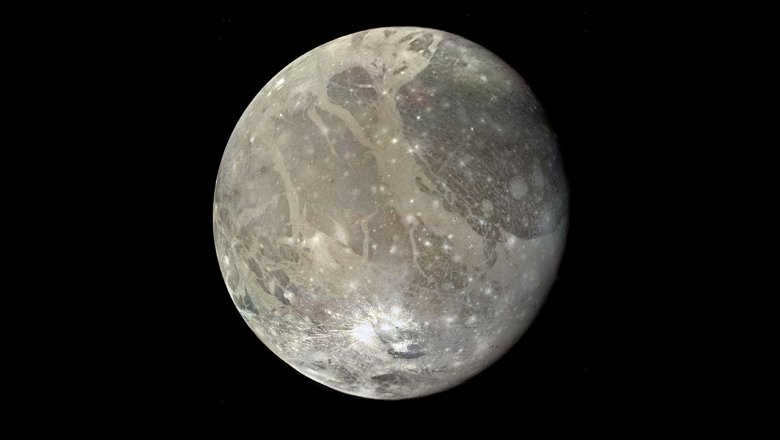
Ganymede
Ganymede, which is the largest moon of Jupiter and the largest moon in the entire solar system, possesses remarkable characteristics. It surpasses the Moon in weight, being twice as heavy, and it exceeds the diameter of Mercury, measuring 5268 km. The surface of this colossal celestial body is coated with a thick layer of water ice, and the temperature can plummet to as low as -203 °C. Nevertheless, there is a speculation among scientists that Ganymede might harbor an ocean of liquid water concealed in its profound depths.
Remarkably, Ganymede is the solitary moon in the solar system that possesses its own magnetic field. Consequently, the aurora borealis is an awe-inspiring spectacle that frequently illuminates its polar regions.
It is worth mentioning that in the early 17th century, the renowned scientist Galileo Galilei had the privilege of observing Jupiter’s largest moon through his inaugural telescope.
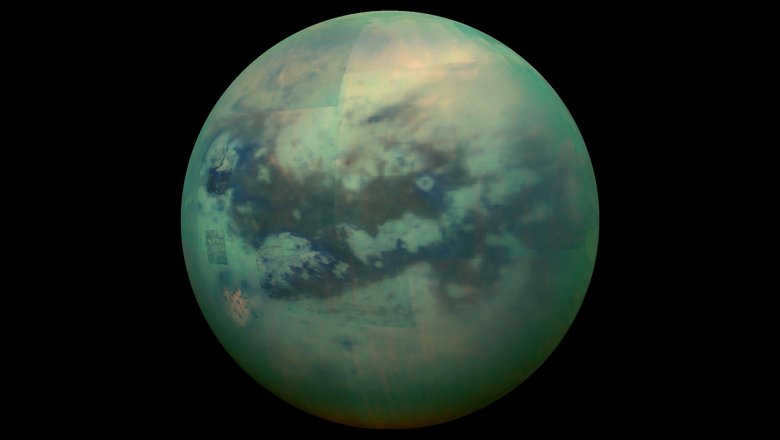
Titan
Titan, the enormous moon of Saturn, is slightly smaller than Ganymede: it has a diameter of over 5000 km and its weight makes up 95% of the total mass of Saturn’s 82 moons. Among all the moons in the solar system, only Titan possesses a thick atmosphere comprised mostly of nitrogen. Its icy surface is adorned with mountains and cryovolcanoes that emit water, ammonia, and methane. Similar to Earth, Titan also has seas and lakes, although they are filled with methane and ethane instead of water. Astronomers frequently liken Saturn’s largest moon to a youthful Earth and speculate that simple organisms may reside in its underground reservoirs.
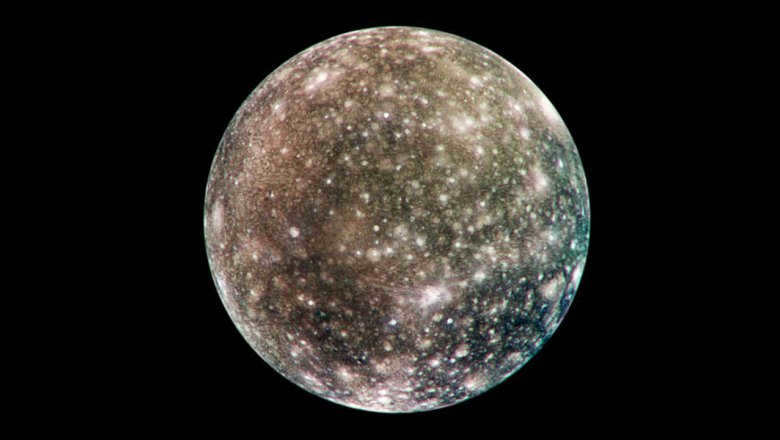
Callisto
Ranked second in size among Jupiter’s moons and third in our list, Callisto takes its name from a captivating nymph in Greek mythology who was transformed into a magnificent bear by Artemis and later into the constellation bearing the same name by Zeus. However, this frigid moon, which is nearly the size of Mercury, does not possess a dazzling beauty. Its surface is predominantly composed of a combination of ice and rock, adorned with numerous craters resulting from meteorite impacts. These craters have given rise to multi-ring formations that resemble grand amphitheaters. The largest of these formations is aptly named Valhalla, with concentric rings extending from a central crater spanning a diameter of 600 km and stretching over a distance of approximately 2000 km.
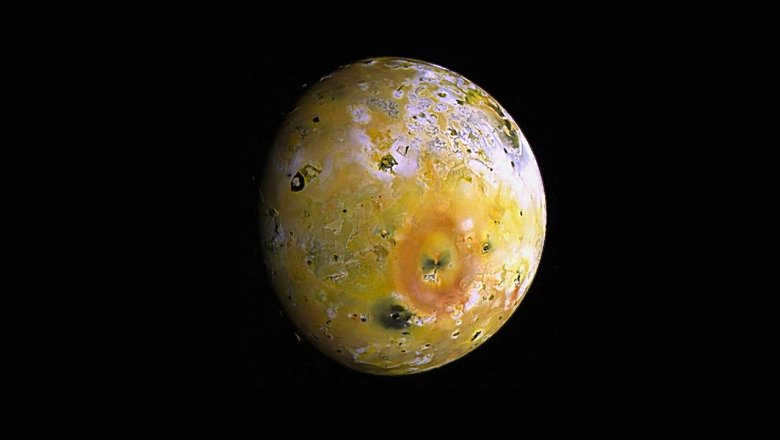

Io
Io, one of Jupiter’s largest satellites, is known for being one of the most turbulent places in the entire solar system.
With more than 400 active volcanoes dotting its surface, Io is constantly releasing sulfur and sulfur dioxide into its atmosphere.
The reason behind this intense volcanic activity lies in Io’s close proximity to Jupiter, the largest planet in the solar system. Jupiter’s gravitational pull heats up Io’s interior, resulting in flowing lava and volcanic ash that give its surface a vibrant appearance. Additionally, Io’s thin atmosphere is composed of 90% poisonous sulfur dioxide gas.
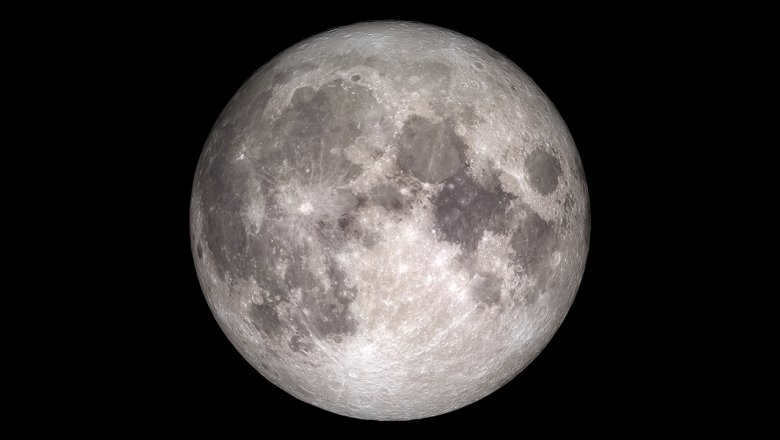
Lunar Satellite
The Lunar Satellite is ranked fifth in terms of size among all the satellites in the solar system. It has a diameter of 3474 km, slightly smaller than Io, but has a larger area than Africa and smaller than Asia. Our closest celestial neighbor is not the most comfortable place in the Universe: it has a thin atmosphere, a perpetually black sky, and extreme temperature variations ranging from -173 ° C in the shade to +127 ° C in the sun. Lunar tremors of up to 5.5 magnitude can be felt several times a year.
On the surface of the Lunar Satellite, you can find neighboring mountains and lunar seas, which are enormous craters filled with solidified basaltic lava. Some craters have also been found to contain frozen water at their bottoms. But what other attractions can be found on the Lunar Satellite? Here is a sneak peek at the world’s first guide to the top attractions on the Lunar Satellite that we have put together.
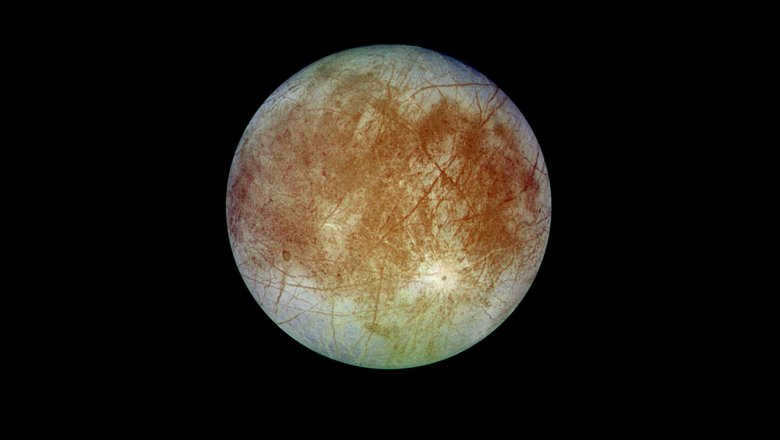
Europa
Europa, one of Jupiter’s moons, bears a resemblance in structure to the planets within Earth’s group. Its surface is covered by a thick layer of smooth ice, which is believed to conceal an ocean underneath. Below the ocean lies a rocky layer. If indeed water exists beneath the ice, it is estimated to be two to three times more abundant than on Earth. Moreover, there is a possibility of the presence of various forms of life, ranging from extremophile bacteria to fish. According to one hypothesis, Europa’s ocean contains sufficient oxygen for the development of complex life forms, and its waters are warmed by tidal forces.
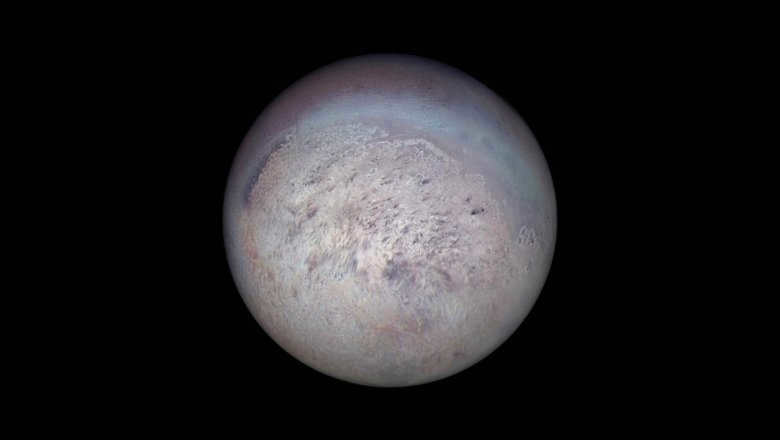
Triton
Triton, Neptune’s largest moon, holds the distinction of being larger in diameter than both Pluto and Eridu, the largest dwarf planets. In fact, Triton’s weight accounts for 99.5% of the total mass of all of Neptune’s moons.
What sets Triton apart from the other satellites is its unique orbit. Unlike the rest, Triton orbits Neptune in the opposite direction to the planet’s rotation.
Not only is Triton Neptune’s largest moon, it is also the coldest satellite in the entire Solar System. With surface temperatures dipping as low as -235 °C, Triton is covered in a combination of water and nitrogen ice. In addition, its cryovolcanoes regularly erupt, spewing liquid nitrogen into its atmosphere.
Recently, my mother shared an amusing anecdote with me. She recounted an evening from my childhood when she entered the room to find me, at the tender age of five or six, gazing out of the window and shedding tears. Concerned, she inquired as to the reason for my distress. I replied, “I feel a sense of pity for the Moon, as the Earth possesses only one satellite.” The following day, my mother stumbled upon a fascinating passage in a book, which detailed a planet that boasted a surplus of satellites, surpassing all others. She felt relieved, knowing that she would not need to console me further.

The planet with the highest number of satellites
When it comes to the solar system, the undisputed champion is Jupiter. Jupiter takes the lead with a total of 69 satellites. This means Jupiter is never alone in its journey through space. Additionally, these are only the known satellites, and it is believed that there are approximately a hundred more yet to be discovered.
These satellites are responsible for Jupiter’s unique striped appearance, giving it its distinctive coloration.
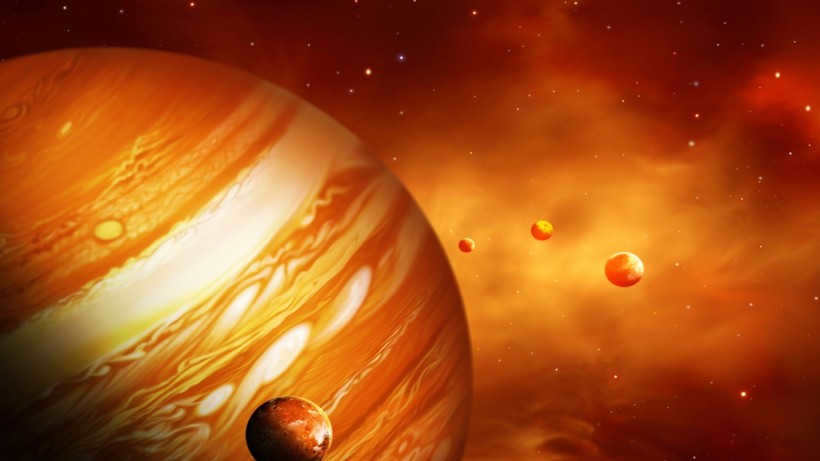
The Moons of Jupiter Discovered by Galileo
The Galilean satellites are the moons of Jupiter that were first discovered by Galileo Galilei. Due to the limitations of his telescope, Galileo was only able to observe the four largest moons of Jupiter:
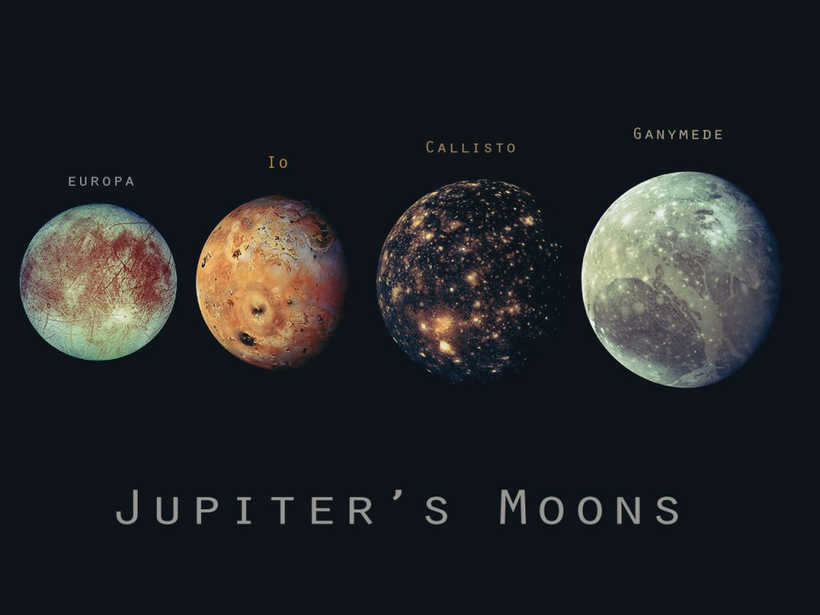
- Europa is the planet with the most satellites.
- Callisto is the planet with the most satellites.
- Hannimede has the highest number of satellites.
- Io has the most satellites.
The moons of Jupiter were named by Simon Marius. Although his records were actually made before Galileo’s, Marius made the mistake of delaying publication. He spent a long time trying to prove that he discovered the satellites first, but failed. As a consolation prize, he was given the opportunity to name them whatever he desired.
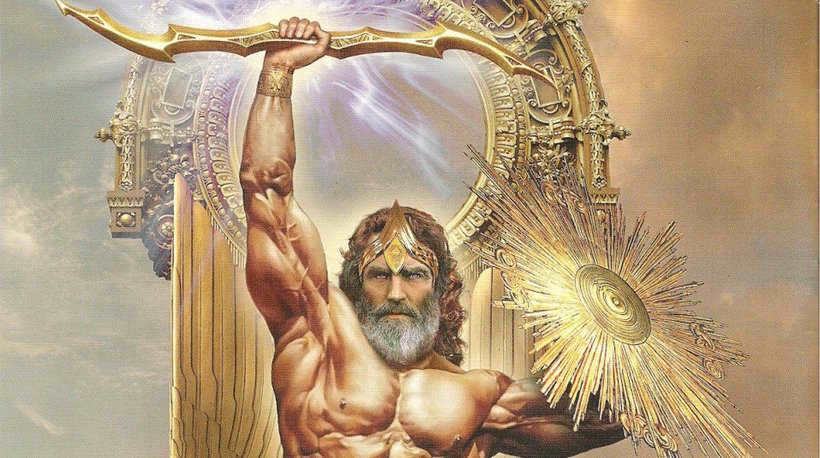
And he decided to give them names inspired by mythology – in tribute to the lovers of the god Jupiter. It wasn’t a terrible idea, but even the amorous god didn’t have such a vast number of lovers.
Jupiter, the satellite thief
A few of Jupiter’s satellites orbit in the opposite direction. It is believed that they were ordinary celestial bodies, peacefully roaming through space without any interaction, until they entered the gravitational field of the gas giant – and now they must revolve around it.
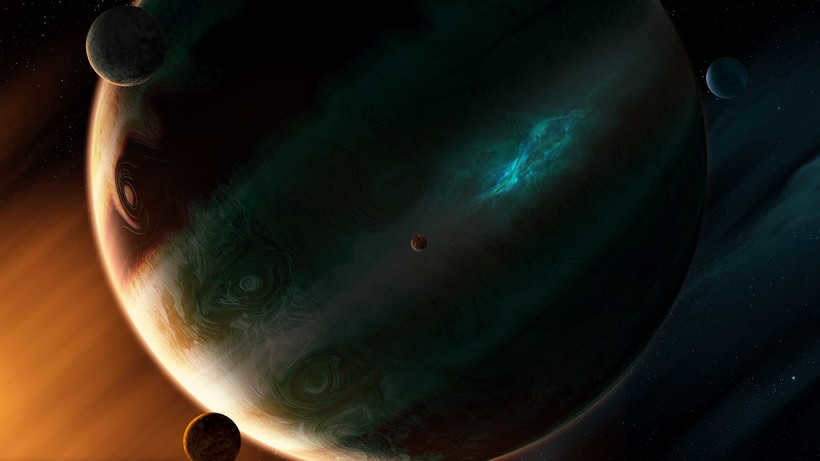
However, if they need to orbit around the intruder, they must do so in defiance of all odds. This type of movement is known as retrograde. They are quite simple to identify by their names. The general rule is: if the name ends with an “e”, the satellite is moving in the opposite direction.
Ever since I was a child, I have been fascinated by astronomy, which is why I have extensively studied this field. Out of all the planets, my absolute favorite has always been Jupiter. Jupiter is the largest celestial body in our solar system, a massive gas giant that is the fifth furthest away from the sun and is accompanied by a multitude of satellites.
Jupiter possesses the largest number of satellites
Throughout history, Jupiter has captivated the imaginations of our ancestors, who crafted numerous legends and bestowed upon it the names of their deities. The present-day name of this planet pays homage to the mighty Roman god, Jupiter, the thunderer. Remarkably, Jupiter can be observed without the aid of a telescope from Earth. This is unsurprising, considering that it ranks second only to the Sun in terms of mass. Some experts speculate that if Jupiter were slightly larger, it could have transformed into a second star in our solar system. Due to its lack of a solid surface and liquid water, conventional understanding suggests that life as we know it cannot thrive on Jupiter. However, scientists propose the intriguing possibility of life existing within the upper layers of its atmosphere.
Notable Moons of Jupiter
Jupiter has a minimum of sixty-seven moons, but there could potentially be even more, possibly up to one hundred. It is interesting to note that these moons were named after deities associated with the divine Jupiter. Some of the most well-known moons of Jupiter include:
- Europa, a moon of Jupiter that possesses a vast ocean, and where water exists, the potential for life is present. The ocean waters of Europa also contain a significant amount of oxygen, which could facilitate the development of both single-celled and more complex life forms;
- Io – a volcanic moon that is characterized by numerous massive volcanoes and the materials ejected during their eruptions;
- Ganymede, known as the largest moon in our solar system, is characterized by its vast number of deep craters, providing evidence of frequent meteor showers;
- Callisto is another moon that possesses oceanic water, just like Europa. This makes Callisto a potential candidate for life;
These four moons of Jupiter, including Ganymede and Callisto, are known for their synchronous orbits, always facing the same direction.
Jupiter’s smaller moons
The remaining moons are frequently irregularly shaped, stony objects. Stony objects. One of the most fascinating small moons is Amalthea. Amalthea was previously a complete body, but due to being bombarded by meteorites, it shattered into fragments, which then gravitationally reunited but never reformed into a whole.
It is believed that the enormous Jupiter, once possessed a larger number of moons, but the planet’s powerful gravity caused them to plummet to its surface.
During my time in school, I had a deep passion for the field of astronomy. The act of observing stars and recording them in my observation diaries held a certain kind of allure that not everyone could grasp. Owning a telescope was a long-cherished dream of mine. So, when I finally received one, I eagerly set my sights on the planets. Surprisingly, my first target wasn’t Saturn, renowned for its magnificent rings, but rather Jupiter, due to its impressive number of satellites.
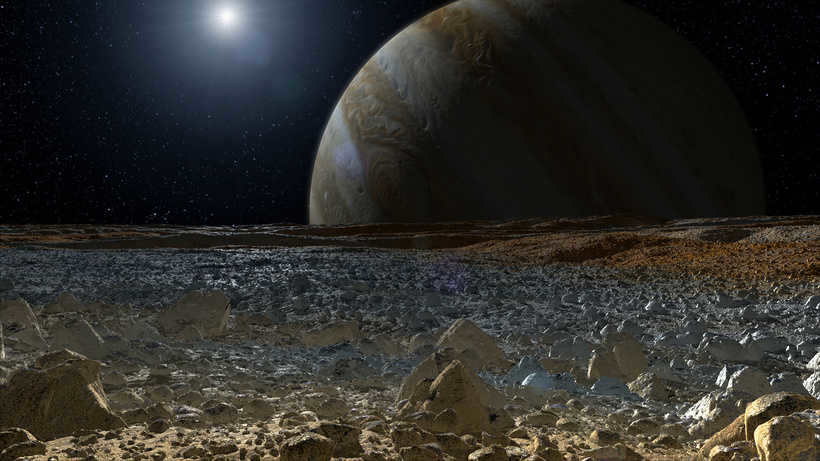
The Number of Satellites Orbiting Jupiter
Currently, there are known to be 79 satellites orbiting Jupiter, ranging from small dwarf moons with diameters of a few kilometers to nearly fully formed planets. In addition, Jupiter possesses its own system of rings. It should be noted that the number 79 is likely not final, as new satellites continue to be discovered even today, with the latest discovery occurring in 2018.
Enumerating all of these objects would be impractical, as the majority of them are assigned alphanumeric names. However, it is worth highlighting the most significant ones, first observed by Galileo Galilei in 1610. These include:
Simon Marius, another prominent scientist, bestowed upon them their names. These celestial bodies draw their names from the rich tapestry of Greek mythology. These satellites stand out as some of the most extraordinary entities in existence. Europa, for instance, boasts an icy surface concealing an ocean teeming with the potential for life. Io, on the other hand, hosts the solar system’s most colossal active volcano.
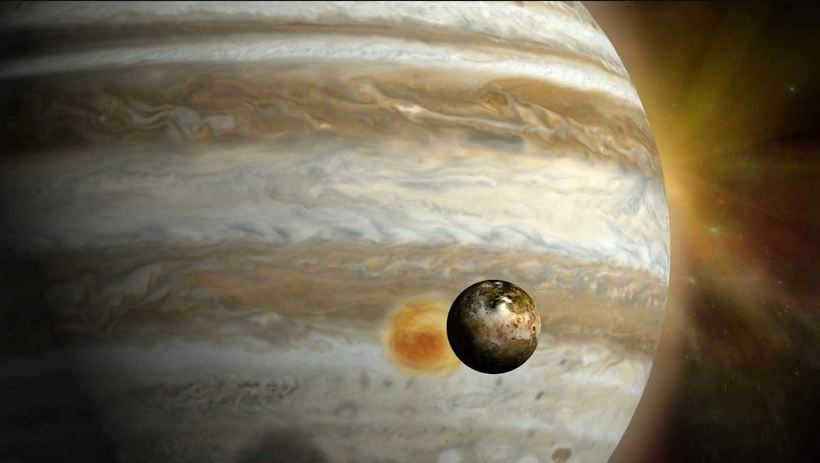
What Causes Jupiter to Have a High Number of Satellites
The abundance of satellites orbiting Jupiter can be attributed to its status as the largest celestial body in our solar system, second only to the Sun. As a result of its immense size, Jupiter has been able to gravitationally capture smaller planets that have crossed its path, drawing them into its orbit. Additionally, the planet has also captured various particles such as dust, fragments, and asteroids, which have provided the necessary building blocks for the formation of additional satellites.
What is the number of satellites orbiting other planets?
It’s important to remember that planets other than Earth also have their own set of orbiting objects. For instance, Saturn boasts a total of 62 satellites, Uranus has 27, and Neptune has 14. Even the dwarf planet Pluto has a significant number of satellites, with a total of five.
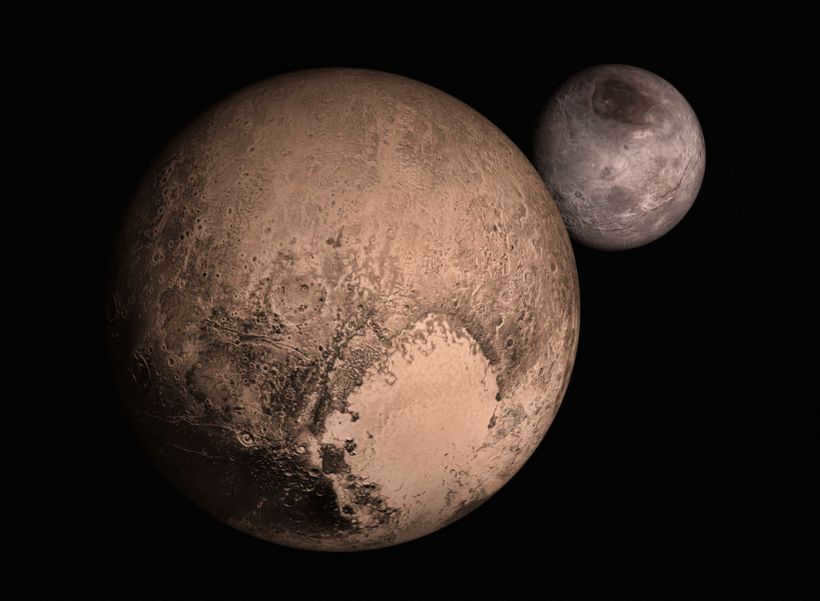
It appears that our solar system is truly remarkable and one-of-a-kind. Every now and then, all it takes is a simple gaze at the sky to witness its marvels.
Back in the summer of 2011, there was an immense amount of anticipation surrounding the launch of the Juno spacecraft, which was designed for the exploration of Jupiter. This planet happens to have the highest number of satellites in our entire solar system. The automated spacecraft successfully reached its destination and, powered by solar panels, it transmitted an extensive amount of data. As a result, scientists will be occupied with deciphering this information for several years to come.
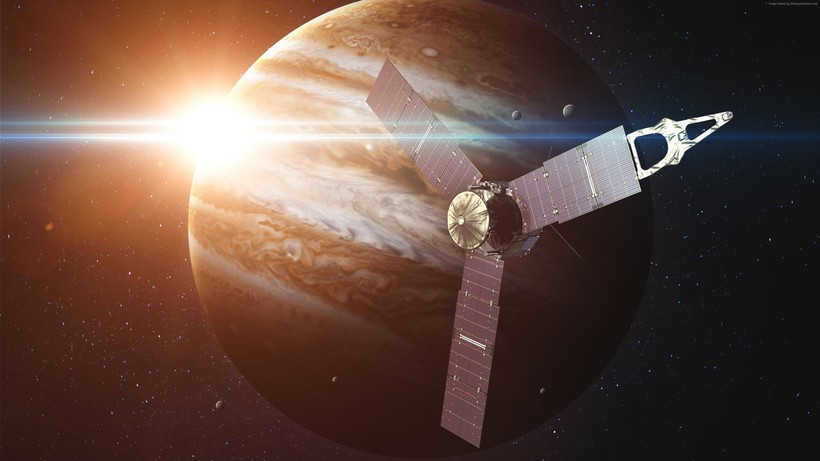
What is the number of satellites orbiting Jupiter
Jupiter has a significantly greater size compared to the combined size of all planets in our solar system. This immense mass even causes the center of gravity to shift beyond the Sun. The immense size and weight of the planet contribute to the existence of a large number of satellites and dust rings surrounding it.
In the seventeenth century, Galileo observed the presence of large satellites using a telescope:
By the 1870s, an additional nine satellites were discovered.
In 1979, while the Voyager 1 spacecraft was en route to Saturn, it detected the presence of three new satellites around Jupiter. Subsequently, the discovery of 51 satellites was made possible with the help of new telescope technologies.
It is believed that Jupiter has at least 100 “moons” that are currently under investigation.
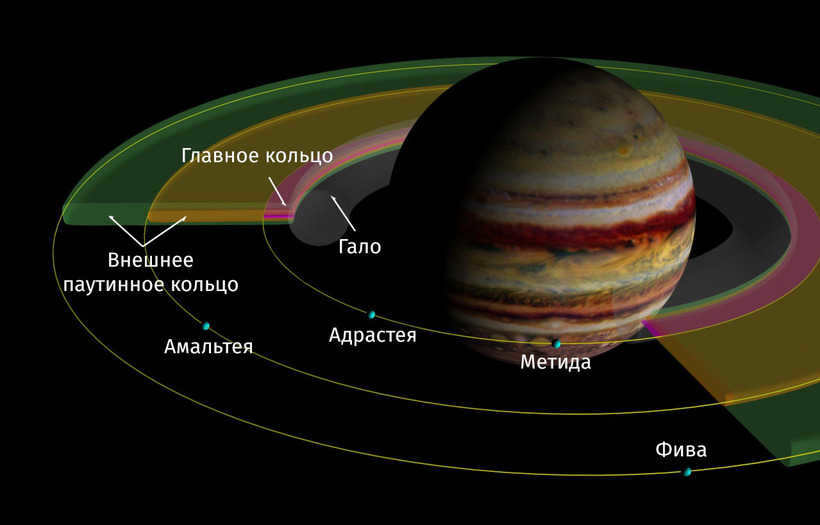
The most extensive
Io, the closest satellite to Jupiter, experiences the gravitational forces of both the planet and Ganymede and Europa, resulting in body heating, deformation, and active volcanic activity. Io’s movement leads to the most powerful thunderstorms on Jupiter.
Europa contains water that may harbor life. The surface temperature is 150-220 degrees Celsius below zero – a “crystal” satellite with a metallic core and a rocky mantle. The atmosphere contains oxygen.
Ganymede holds the title for the largest satellite in the solar system, surpassing even Mercury in size. Its surface is covered in ice and marked with numerous craters, and oxygen is present in the atmosphere.
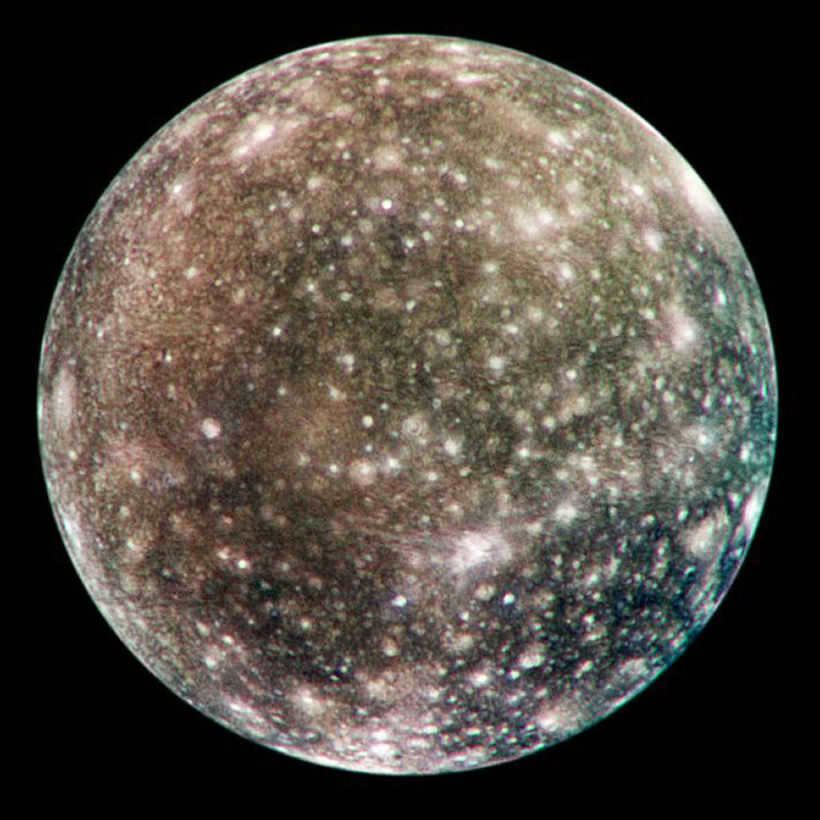
Callisto consists of water and rocks and possesses the most ancient surface among all celestial bodies. It has been chosen as a potential site for a future space base dedicated to the exploration of Europa.
Inner and outer
There are several moons in the inner orbit of Jupiter, including:
A total of 59 satellites have been identified in the outer region. The ones closest to Jupiter move in the same direction as its rotation, while the others move in the opposite direction.
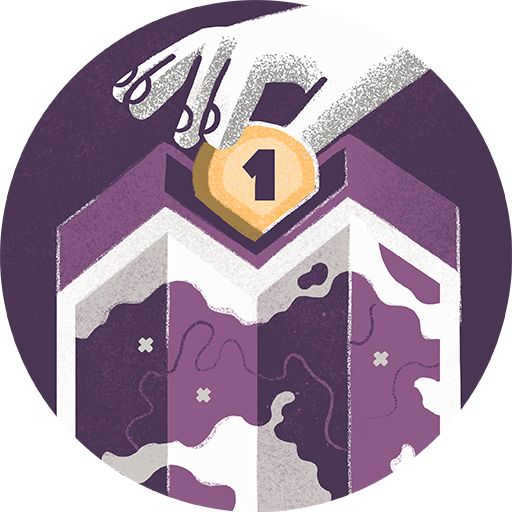
Where does the fascination with astronomy originate? Is it from school lessons? A visit to the observatory, perhaps? Personally, my interest began after reading a captivating book by Isaac Asimov entitled David Starr and the Moons of Jupiter. The tale of the massive planet and its numerous satellites was so enthralling that I found myself seeking out books on astronomy during my next visit to the library. I was particularly eager to verify the accuracy of the story and determine which planet actually possesses the greatest number of satellites.
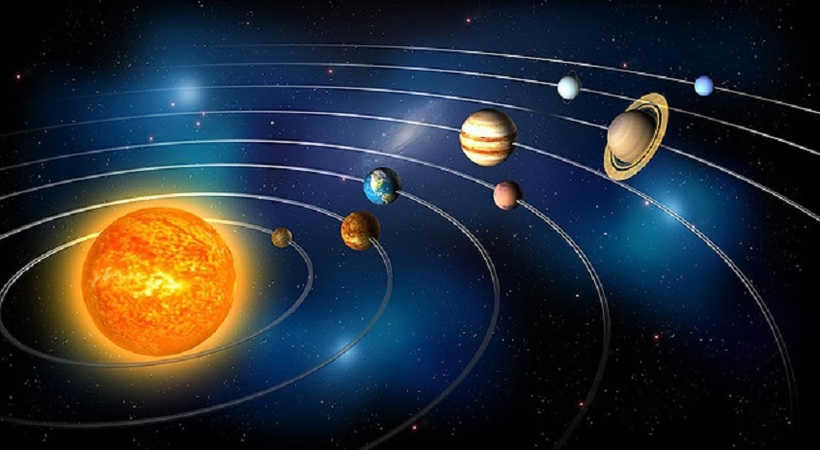
Satellites of Jupiter
Our solar system is an extraordinary phenomenon. Through my years of fascination with astronomy, I have come to understand that no question can be answered with absolute certainty. The number of satellites, for instance, is a highly complex matter. In terms of the quantity of moons orbiting a planet, the clear frontrunner is, without a doubt, Jupiter.
This colossal gas giant, named after the Roman god of thunder, is home to a staggering 69 known satellites. Some of these, such as Callisto, Io, Ganymede, and Europa, are so sizable that they can be observed even with relatively low-powered binoculars. They were first identified by Galileo in 1610.
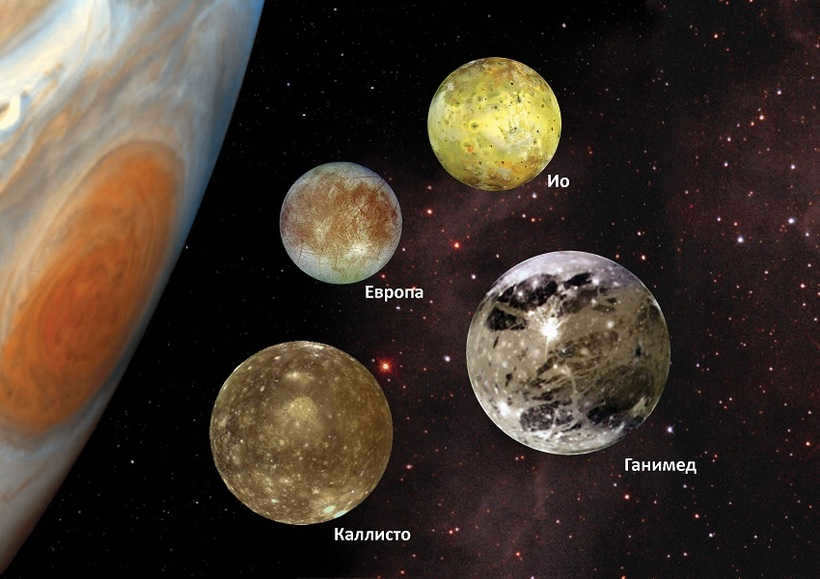
Jupiter is an incredibly “greedy” planet (much like the deity it is named after). Nearly half of its moons have retrograde orbits. Detecting these moons can be challenging because they move in the opposite direction, making their trajectory more difficult to calculate. The reason for this peculiar motion is rather straightforward: the planet has stolen these moons from its less massive neighboring planets. Some of these “captives” include:
As for the number of small moons this gas giant may possess, that remain undiscovered, astronomers have yet to determine. For instance, the minuscule 4-kilometer-long moon Dia was initially detected through a telescope, but was soon lost. Its existence was only confirmed 12 years later!
Saturn leads in the number of small satellites
If we crunch the numbers, when it comes to the planet with the most satellites, Jupiter would have to concede the top spot to Saturn. Saturn is known as the Lord of the Rings in our solar system.
Officially recognized, Saturn has a total of 62 satellites, with the largest ones being spherical in shape. These include Rhea, Diona, and the icy spheres Enceladus and Mimas. There is also Tefia, which is made up of water ice and rock. And, of course, there is the massive Titan, second only to Ganymede. Titan measures over 5,000 kilometers in size and its mass is so substantial that it can maintain an atmosphere (which is one and a half times denser than Earth’s).
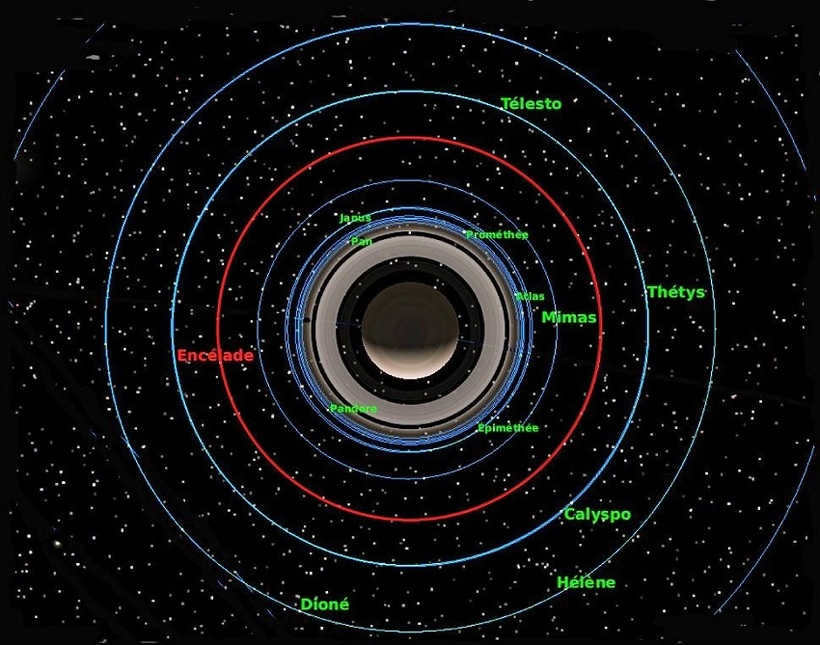
Moreover, Saturn is encompassed by a vast number of satellites, which consist of asteroids of various sizes and frozen gas. The larger ones alone are believed to number in the hundreds of thousands. In fact, the estimated count is in the hundreds of thousands!
My fascination with astronomy began when I received a remarkable present – a telescope. Although it was a fairly average instrument, it allowed me to observe Jupiter clearly. I could even make out a tiny spot, which was the shadow of one of its satellites.
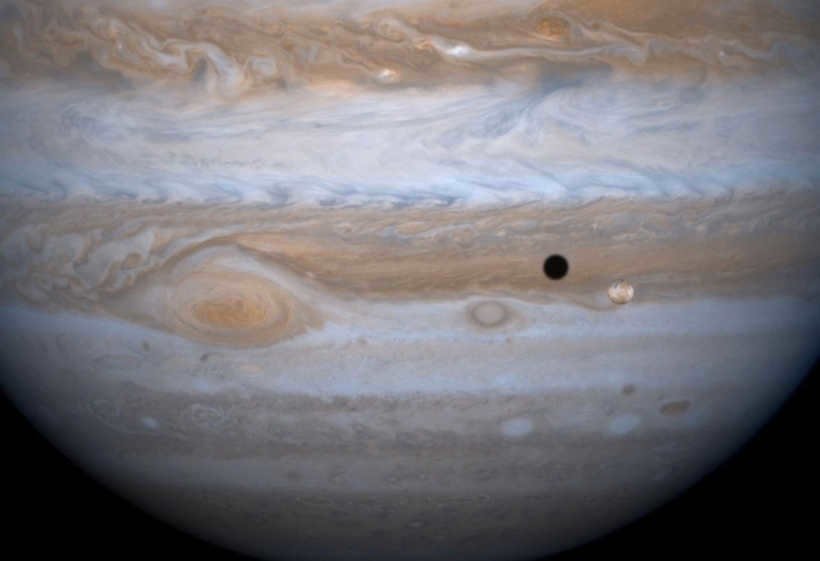
The leader in the number of satellites
Jupiter is unparalleled when it comes to the quantity of moons. It boasts a staggering 69 satellites. There is much speculation surrounding the origin of these satellites, as well as theories regarding their impact on the planet itself. Scientists are particularly intrigued by a group of four satellites that orbit in the opposite direction compared to the others. Surprisingly, these satellites are essentially just regular asteroids that orbit at significant distances from the planet.
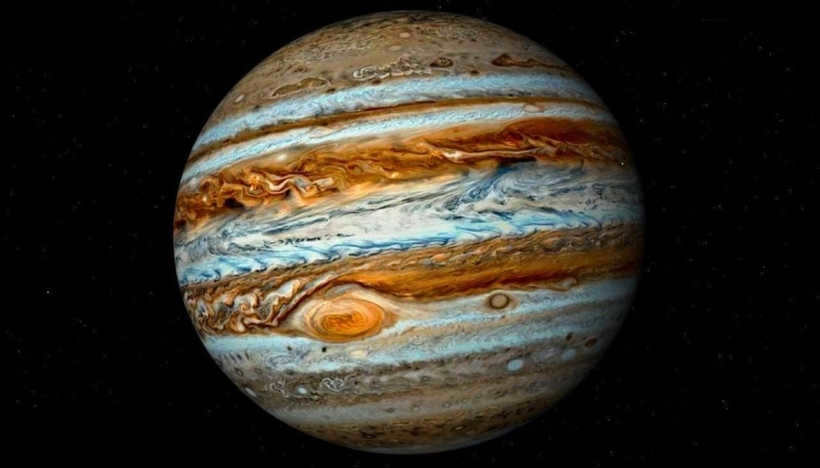
The satellite known for its volcanic activity
Io is the initial satellite to be discovered orbiting a gas giant. Despite its size being slightly larger than our Moon, it is unique in the sense that it does not have any craters, unlike the Moon. This is because of the presence of volcanoes, which erupt and fill the craters, resulting in a smooth surface. In fact, it is the only known place in the entire solar system, apart from our own planet, where volcanic activity occurs. Despite this, the average temperature on Io is around -155°C, although it reaches over 1500°C near the volcanoes. A day on Io lasts approximately 43 hours, which is the same amount of time it takes for the satellite to complete one orbit around Jupiter. Jupiter. There are over 500 volcanoes on Io, erupting at great heights similar to geysers. Naturally, these volcanoes contribute to the geologic diversity of the moon, resulting in the formation of mountains. Here are a few of the prominent ones:
- Boosavla – reaches heights of up to 20 kilometers;
- Ionian Mountain – nearly 13 kilometers in height;
- Hiaka – with a peak elevation of 12 kilometers;
- Gem – stands at almost 10 kilometers.
Volcanic activity — The consequence of constant compression and stretching caused by Jupiter’s gravitational forces. It is akin to the effect the moon has on the tides of our planet, and the process is truly remarkable: the surface is fractured and uplifted by as much as 150 meters.
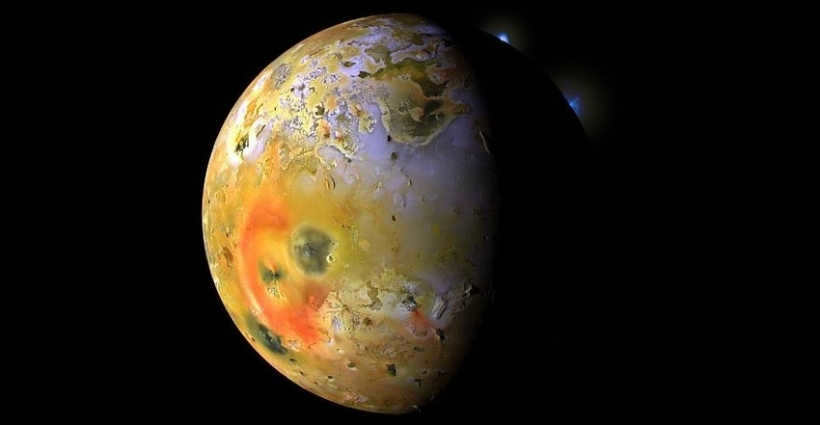
The satellite is known for its incredibly thin atmosphere and polar lights at the equator, which are caused by high levels of radiation. Astronomers believe that it originated from the region of Jupiter that has abundant ice. Scientists theorize that the combination of ice and heat may have created conditions suitable for the existence of life on the satellite.
For centuries, humans were only aware of one satellite in our solar system, which is the moon. However, in 1610, Galileo made a groundbreaking discovery by identifying four satellites orbiting Jupiter, proving that other celestial bodies also have moons. But how many moons are there in our solar system?
What is the total number of satellites in the solar system?

Comparison of the sizes of various satellites orbiting planets in our solar system.
Determining the exact number of satellites orbiting planets in the solar system is a challenging task due to the presence of both confirmed and potential satellites. Currently, there are 173 known satellites, but when considering dwarf planets, the count increases to 182. A comprehensive table provides detailed information about each satellite associated with the solar planets.
| Saturn’s natural satellites | |
| Shepherd Satellites | S/2009 S1 – Pan – Daphnis – Atlas – Prometheus – Pandora – Epimetheus – Janus – Egeon |
| Inner satellites | Mimas – Enceladus – Tefia – Dione – Telesto – Calypso – Helena – Polydevk |
| Alcyonids | Mephona – Anfa – Pallena |
| Outer satellites | Rhea – Titan – Hyperion – Japetus |
| Irregular satellites | Eskimo group: Kiviok – Ijirak – Paliak – Searnak – Tarkak |
Moons of Pluto
Pluto, the dwarf planet in our solar system, has several satellites orbiting around it. These satellites are part of the Kuiper Belt, a region beyond Neptune that is home to many small objects. In addition to the Kuiper Belt objects, there are also trans-Neptunian objects (TNOs) that have been discovered. Saturn, another planet in our solar system, has about 200 tiny satellites, with 62 of them having officially confirmed orbits. If we combine all of these objects, we find that there are a total of 545 moons in our solar system.
Moons in the Inner System
The inner system of our solar system is the region that includes the first four planets from the Sun. However, when it comes to counting moons, we only consider Earth and Mars. Venus and Mercury do not have any moons orbiting around them.
Earth’s Moon, also known simply as “the Moon,” is a natural satellite that orbits around our planet. It has a radius of 1737 kilometers and a mass of 7.3477 x 10^22 kg. The density of the Moon is approximately 3.3464 g/cm^3. Scientists believe that the Moon was formed as a result of a collision between Earth and a large celestial body.
The pair of moons orbiting Mars, known as Phobos and Deimos, are speculated to have originated from the asteroid belt due to their asteroid-like appearance and their position in a tidal lock with the planet. Phobos, which is the closer of the two moons at a distance of 9377 km, has a diameter of 27 km.
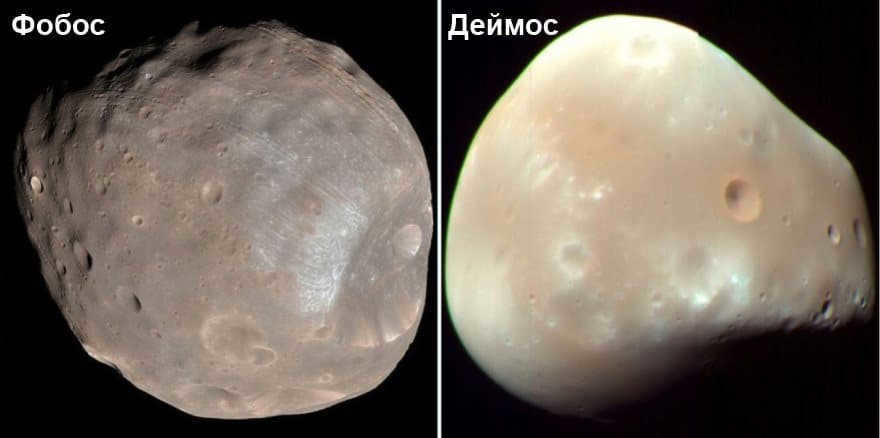
The Mars Reconnaissance Orbiter (MRO) has captured images of Phobos and Deimos, the two natural satellites of Mars.
Deimos, which has a diameter of only 12.6 km, is located 23,460 km away from Mars and takes approximately 30.35 hours to complete one orbit around the planet. There are a total of three satellites in the inner system of Mars.
The system on the outskirts
Once we pass the belt of asteroids, we enter the outer regions of the solar system where the celestial bodies become more abundant. This region is inaugurated by the presence of a gigantic gas planet known as Jupiter, which also happens to be the largest planet in the entire system. With a total of 79 moons currently known, Jupiter’s moon count could potentially increase to 200 if all the proposed candidates are officially recognized.
Among the 79 satellites, the four largest ones have been named after their discoverer, Galileo Galilei, and are collectively referred to as the Galilean moons. These include Io, which is renowned for its high volcanic activity, Europa, believed to have a hidden ocean beneath its icy surface, Ganymede, the largest moon in the entire solar system, and Callisto, another moon suspected to have a subsurface ocean and ancient terrain.
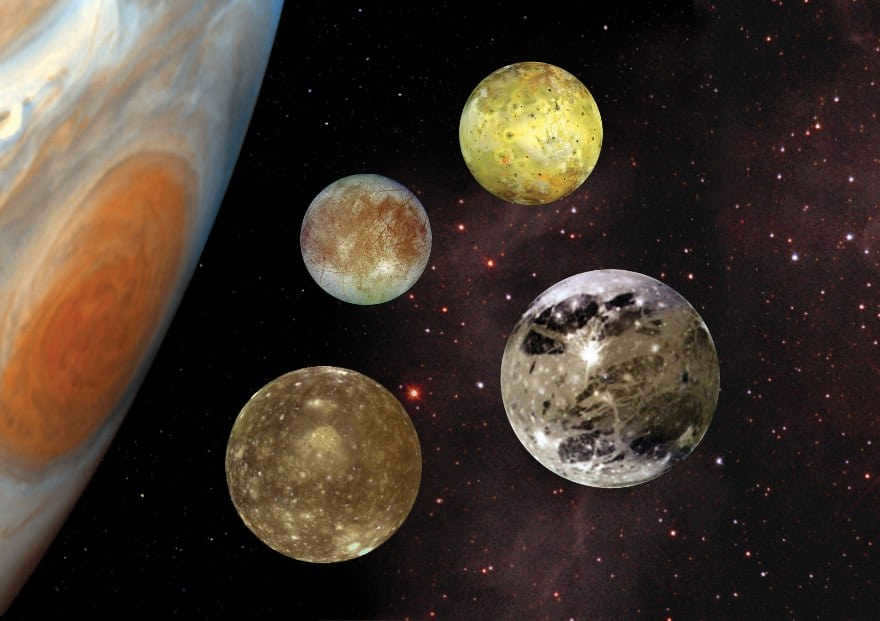

Jupiter and Galileo’s satellites
The Almathea group also consists of four satellites that have a diameter of less than 200 km. The irregular satellites are quite small and are located at long distances from each other. They are also categorized into different families based on their composition and the path they follow in orbit.
Saturn is believed to have a total of 150 satellites, but only 62 of them are officially recognized (with 53 having names). Out of these, 34 have diameters smaller than 10 km, while 14 have diameters ranging from 10 to 50 kilometers. However, there are also large-scale satellites that extend up to 5,000 km in diameter. All of these satellites are named after titans as a tribute.
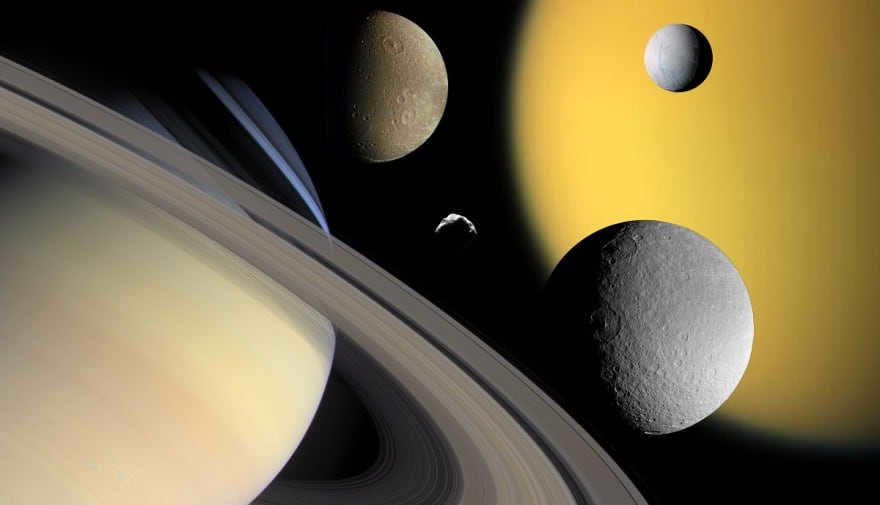

Saturn and its moons: Titan, Enceladus, Dione, Rhea and Helen
The inner satellites are made up of ice and have a rocky core, icy mantle, and crust. The outer ones extend beyond the E-ring. Titan is considered the largest moon with a diameter of 5150 km and a mass of 1350 x 10 20 kg. It contains 96% of the mass of the entire planetary system.
There are 27 moons orbiting Uranus. Some of the largest ones include Miranda, Ariel (the brightest), Umbriel (the darkest), Oberon, and Titania.
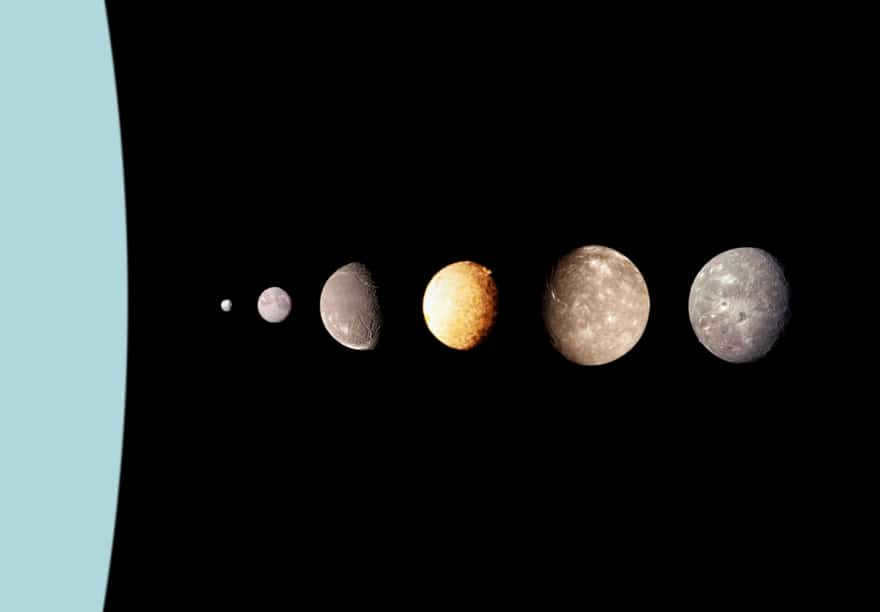
It is believed that all of these satellites originated from the accretion disk of the planet. Each of them is composed of a combination of rock and ice in equal proportions. However, Miranda stands out as it is primarily made up of ice.
On the other hand, Neptune is home to 14 moons that are named after sea nymphs. The regular moons are located closer to the planet, while the irregular ones formed from the remnants of early collisions and have retrograde orbits that take them far away from the planet.
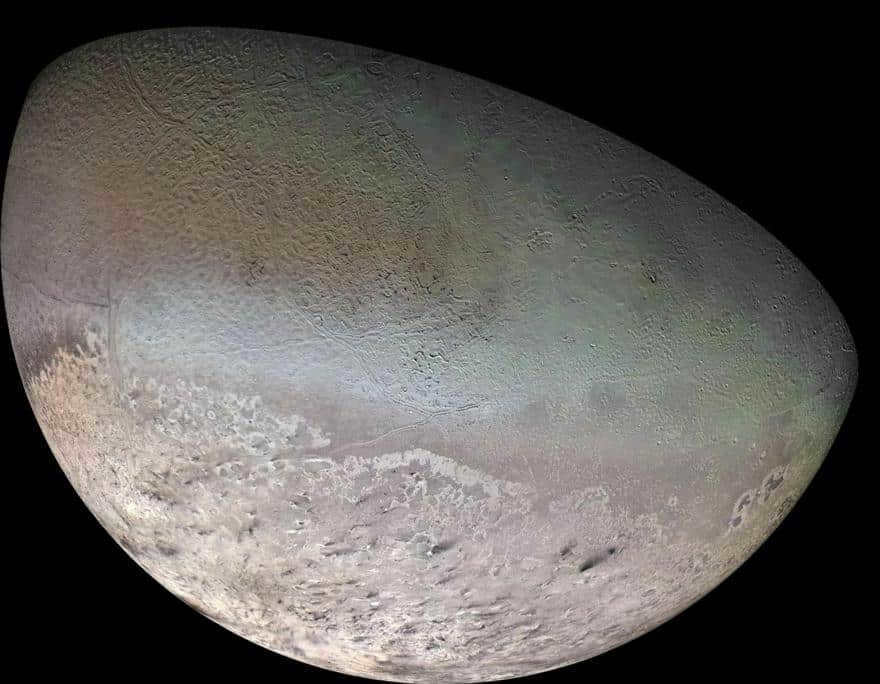
In 1989, Voyager 2 captured a stunning color mosaic of Triton.
Triton, which has a diameter of 2700 km, is known as the largest moon and is located 354759 km away from the planet. Furthermore, it possesses enough mass to achieve hydrostatic balance.
Dwarf planets and other celestial bodies
Upon closer examination of the celestial system, it was determined that the moons not only orbit around the planets, but there are also dwarf planets, trans-Neptunian objects (TNOs), and other celestial bodies. These objects are mostly observed in the vicinity of Pluto, Erida, Haumea, and Makemake.
Pluto is accompanied by five satellites, with Charon being the largest and nearest.
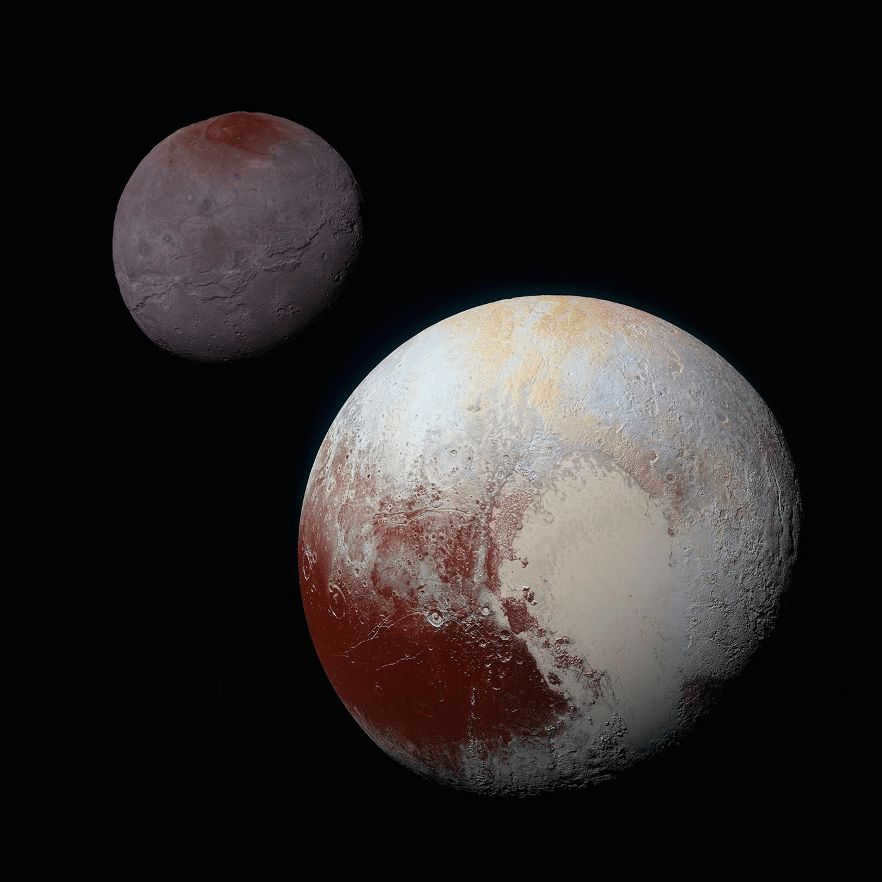
The New Horizons spacecraft reached Pluto in 2015.
In addition to Pluto, there are four other known moons orbiting the dwarf planet. These moons are Nycta and Hydra, discovered in 2005, Kerber, discovered in 2011, and Styx, discovered in 2012. Out of these moons, only Nycta and Hydra have an elongated shape and did not become spherical. Some scientists speculate that Pluto and its largest moon Charon should be considered a binary system. They are locked in a gravitational dance, and the moon may have cryogeysers.
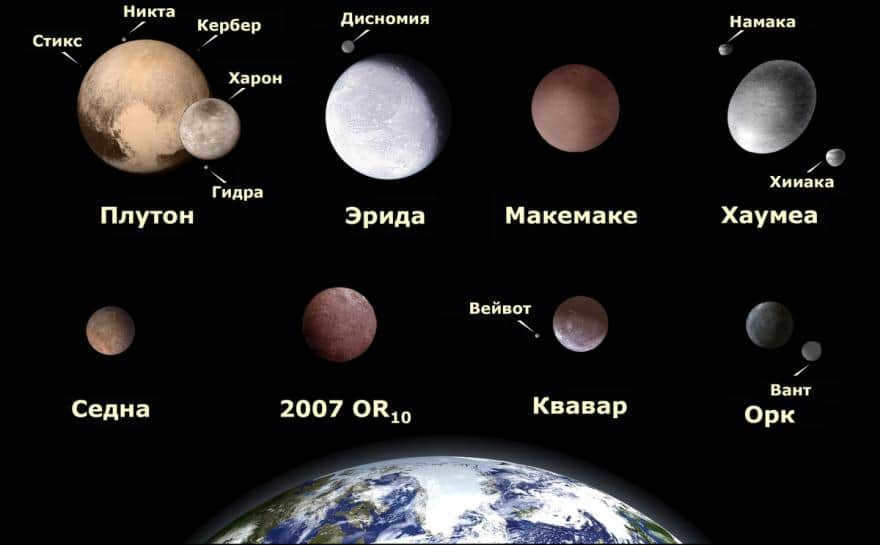
Comparisons between Pluto, TNO, and Earth
Haumea, discovered in 2005, has two moons named Hiaka and Nakama. Hiaka measures 310 km in diameter and may be a part of the dwarf planet. Nakama completes an orbit every 18 days.
Erida, which has Dysnomnia, was also discovered in 2005.
In 2016, a moon named S/2015 (136472) was found near Makemake. It stretches 175 km in diameter and is located 21,000 km away from Makemake.
The largest and smallest moons in the solar system
The largest moon in the solar system is Ganymede, with a diameter of 5262.4 km. On the other hand, the smallest moons are S/2003 J9 and S/2003 J12, with sizes of only 1 km.
Now you have an idea of how many satellites exist in the solar system. However, keep in mind that we are only discussing the satellites that have been discovered so far.
The creation of the solar system
Composition of the Solar System
Interesting information about the solar system
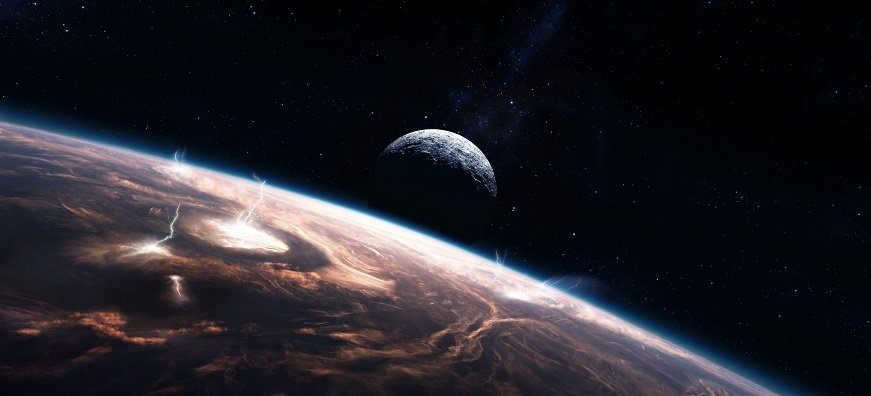
Satellites in the Solar SystemTable of satellites for all planets. Description and characterization with photos, number, largest and smallest satellite of the system.
The Earth’s moon has always captivated and intrigued humanity, inspiring both awe and reverence. It serves as a constant reminder of our place in the vast universe. Our moon, a celestial body that orbits our planet, can be observed with the naked eye. In fact, humans have even set foot on its surface. But have you ever wondered about the moon’s origins and purpose? The moon, like many other celestial bodies, is a natural satellite. It orbits our planet, providing a unique perspective of Earth and its surroundings. However, Earth is not the only planet with satellites in its orbit. Various other planets in our solar system also have their own satellites, each with its own unique characteristics and features.
Most of the planets in our solar system have their own satellites. The number of satellites varies from 1 for Earth to as many as 67 for Jupiter. However, two of our planets, Mercury and Venus, do not have any satellites.
Saturn has 63 satellites, Uranus has 27, and Neptune has 14. Pluto, on the other hand, has five satellites, one of which is Charon. Charon is actually so large that astronomers consider it to be a double planet with Pluto, rather than a planet and its satellite.
These satellites also differ in size. The smallest satellite of Mars is Deimos, with a diameter of approximately 10 miles (11 kilometers). On the other hand, the largest satellite in our solar system is Ganymede, which belongs to the planet Jupiter. Ganymede has a diameter of 3,280 miles (5,262 km), making it even larger than the planet Mercury. In comparison, Earth’s satellite, the Moon, has a diameter of 2,160 miles (3,476 km).
Are you familiar with the tiniest satellite in the entire solar system?
Dactylus holds the title for being the smallest satellite in the solar system, measuring just a mile in width. What makes Dactylus even more fascinating is that it does not orbit a planet, but an asteroid. Previously, astronomers believed that asteroids were too small to have satellites, but they were proven wrong.
All satellites, including our own, orbit around their respective host planets while also rotating on their own axis. Our moon, for example, takes over 27 days to complete one revolution around the Earth. Some satellites, like ours, undergo synchronous rotation, meaning the time it takes for the moon to orbit the planet once is the same as the time it takes for the moon to rotate on its own axis. Consequently, the moon always presents the same face to the planet.

Comparison of sizes for different satellites and planets within our solar system
Planetary satellites in the solar system: Worlds made of rock and ice
The majority of planetary satellites are primarily composed of either rock, ice, or a combination of both. They have a much lower density compared to planets and lack a metallic core. Certain satellites, like Titan, the moon of Saturn, possess dense atmospheres. The presence of such an atmosphere leads astronomers to speculate that there may be some form of life on this particular satellite. However, since most satellites lack atmospheres, they lack natural protection against meteor impacts.
Most of the satellites in our solar system have numerous craters on their surfaces. Many of these satellites also exhibit a multitude of distinct surface characteristics, such as deep valleys and massive faults. Jupiter possesses some of the most captivating satellites in the entire solar system. The largest four, Ganymede, Io, Europa, and Callisto, are referred to as the Galileo satellites. This designation stems from the fact that they were initially observed by astronomer Galileo Galilei in the 1600s. Io, in particular, is of great interest as it was the first satellite where active volcanoes were identified. The Voyager spacecraft discovered enormous volcanic craters erupting molten sulfur, reaching heights of hundreds of miles into space. Another intriguing satellite is Europa. From its exterior, it appears to be an icy sphere. However, astronomers believe that it might possess a liquid ocean beneath the ice. If this hypothesis proves true, Europa could potentially harbor extraterrestrial life. It is speculated that primitive life forms could have evolved near deep-sea hydrothermal vents, akin to those recently uncovered on Earth.
| Saturn’s moons | |
| Shepherd Moons | S/2009 S1 – Pan – Daphnis – Atlas – Prometheus – Pandora – Epimetheus – Janus – Egeon |
| Inner Moons | Mimas – Enceladus – Tefia – Dione – Telesto – Calypso – Helen – Polydevcus |
| Alcyonides | Mephona – Anfa – Pallena |
| Outer Moons | Rhea – Titan – Hyperion – Japetus |
| Irregular Moons | Eskimo group: Kiviok – Ijirak – Paliak – Siarnak – Tarkak |
Satellites of the solar system that have been captured
There are various theories among astronomers regarding the formation and origin of satellites, although the exact mechanisms are not fully understood. It is generally believed that most of the smaller satellites are actually captured asteroids. During the early stages of the solar system, countless space boulders were scattered throughout the universe. These boulders were primarily formed from leftover materials from the solar system’s formation, while some might have resulted from the destruction of planets due to massive cosmic collisions. It is possible that some of these rocks were pulled into orbit by the gravitational force of planets, ultimately becoming satellites in their own right. However, as the number of small satellites increases, the task of explaining their origins becomes more challenging. It is speculated that certain satellites may have originated from the Kuiper Belt, a region of the solar system located in its outermost reaches. This region is known to contain numerous small, planet-like objects. In fact, many astronomers theorize that both Pluto and its moon Charon are actually objects from the Kuiper Belt, rather than true planets.
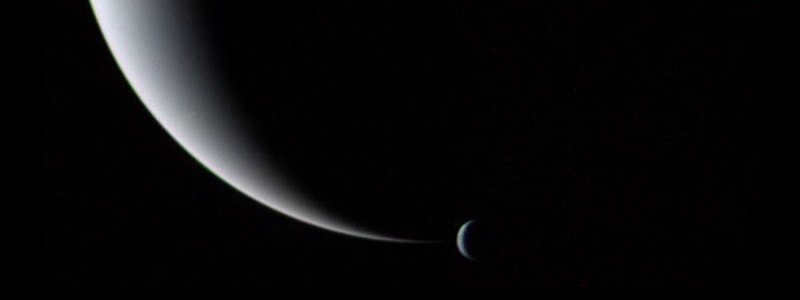
Triton, a satellite of Neptune, is shrouded in mystery and is thought to have been captured from elsewhere.
Occasionally, gravitational forces can guide such objects on a trajectory through the solar system’s interior, leading to their capture by one of the planets. It is possible that the largest satellites in the solar system formed from the original solar nebula that also gave rise to the Sun and other planets. Astronomers speculate that the Moon may have broken off from Earth billions of years ago. Evidence from rock samples collected during the Apollo missions suggests that the Moon’s composition closely resembles that of Earth.
There is a belief that a fragment may have been detached from the early Earth due to a grazing impact. This fragment subsequently fused together and took on the form of a spherical satellite, ultimately achieving a stable orbit around the planet. Although this is the prevailing hypothesis regarding the moon’s formation, it is not the sole theory. Some individuals contend that the moon was actually captured by the Earth. There is even speculation that the moon could be a Kuiper Belt object, similar to many of the satellites orbiting other planets.
The destiny of the satellites in the solar system
When observing the Moon during nighttime, it is difficult to fathom a world without it. However, there may come a time in the future when the Moon ceases to exist. Satellites are not everlasting. Through the use of laser beams and precise measurements, astronomers have determined that our Moon is progressively moving away from Earth at a rate of approximately two inches per year. Millions of years ago, it was much nearer than its current position. In fact, during the era when dinosaurs roamed the Earth, the Moon appeared several times larger in the sky compared to its present size. Astronomers speculate that one day, the Moon might break free from the Earth’s gravitational pull and embark on a journey through space.
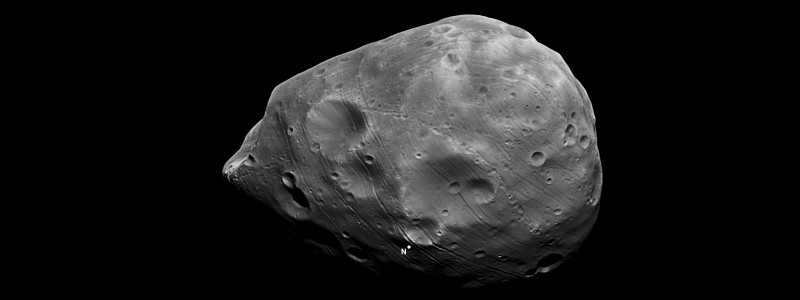

Mars’ ill-fated moon, Phobos, is steadily approaching the planet. In the future, it will meet its fiery demise, plunging into the atmosphere and crashing into the red planet. Numerous other satellites within our solar system could potentially face a similar fate, as they are subject to the gravitational forces exerted by their respective planets.
Many planets have rings composed of small particles of ice and rock. These rings likely formed when a moon or moons were destroyed by the planet’s gravity. Over time, these particles spread out and formed the thin rings that we observe today. Other moons located near the rings prevent them from colliding with each other. These moons’ gravity keeps the particles in their orbits and prevents them from falling back towards the planet. We refer to these moons as shepherd satellites because they help maintain the alignment of the rings, similar to how a shepherd keeps a flock of sheep in line. Without these satellites, Saturn’s magnificent rings would have vanished millions of years ago.
Mark Showalter, a scientist at the SETI Institute for the Search for Extraterrestrial Civilizations, states that living on one of Pluto’s two moons would present challenges in determining the exact time and location of sunrise each day.
Satellites orbiting planets in our solar system
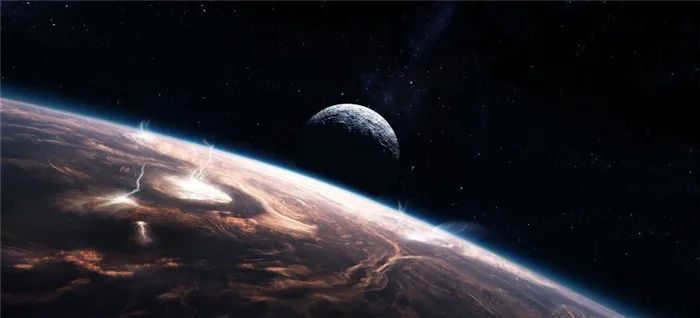
The solar system is home to a variety of satellites orbiting different planets. A comprehensive table provides descriptions, characteristics, photos, and information on the number, largest, and smallest satellites in the system.
The Moon has always captivated humanity, evoking both fear and wonder. It has been revered and dreaded, serving as inspiration for amateurs and writers alike. Our Moon is an enigmatic celestial body that can be observed without the aid of telescopes. Humans have even set foot on its surface. However, what exactly is the Moon and how did it come into existence? The Moon can be described as a natural satellite that orbits around our planet. And when it comes to satellites, Earth is not alone in having them.
Other planets in our solar system also have their own satellites. The number of satellites differs for each planet, ranging from just 1 for Earth to a whopping 67 for Jupiter. However, two of our planets, Mercury and Venus, don’t have any satellites orbiting around them.
When it comes to the number of satellites, Saturn takes the lead with 63, followed by Uranus with 27, and Neptune with 14. Pluto, despite being considered a dwarf planet, surprisingly has five satellites, one of which is Charon. In fact, Charon is so big in comparison to Pluto that astronomers often mistake the two celestial objects for a double planet rather than a planet and its satellite.
Not only do satellites differ in number, but they also vary greatly in size. The smallest satellite in our solar system can be found orbiting Mars, and it’s called Deimos, with a diameter of approximately 10 miles (11 kilometers). On the other hand, the largest satellite in our solar system belongs to Jupiter, and it’s called Ganymede. Ganymede dwarfs even the planet Mercury with its impressive diameter of 3,280 miles (5,262 km). To put things into perspective, Earth’s satellite, the Moon, has a diameter of 2,160 miles (3,476 km).
Are you familiar with the tiniest satellite in the entire solar system?
Dactyl holds the distinction of being the smallest satellite in the solar system, measuring just one mile in width. Dactyl stands out due to its unique characteristic of orbiting an asteroid rather than a planet. Previously, astronomers believed that asteroids were too small to possess satellites; however, this assumption has been proven false.
All satellites orbit around their respective host planets while also spinning on their own axis. For instance, it takes our moon over 27 days to complete one full revolution around the Earth. Certain satellites, including our moon, engage in what is known as synchronized rotation. In such cases, the time it takes for the moon to complete one revolution around the planet is equal to the time it takes for the moon to complete one revolution around its own axis. Consequently, the moon remains consistently positioned on the same side of the planet.

Comparison of the sizes of several satellites and planets within our solar system
Astronomers have recently been able to explore the surface of Titan, one of Saturn’s moons, thanks to photographs captured by the Hubble Space Telescope and the Cassini space mission. These images have provided a clear view of Titan’s landscape, despite its thick atmosphere.
Ganymede
is a satellite of Jupiter and is the largest moon in the solar system. It was discovered by Galileo Galilei in 1610 and is named after the mythological character Ganymede, who was a lover of Zeus. Ganymede has a diameter of about 5,268 kilometers, making it larger than the planet Mercury. It is believed to have a subsurface ocean of liquid water and may have the potential to support life. Ganymede is also known for its complex and varied terrain, with features such as craters, grooves, and ridges. The surface of Ganymede is composed mainly of water ice, with some rocky areas. The moon has a thin atmosphere composed primarily of oxygen. Ganymede is of great interest to scientists and has been the subject of numerous space missions, including the Galileo spacecraft and the upcoming Europa Clipper mission.
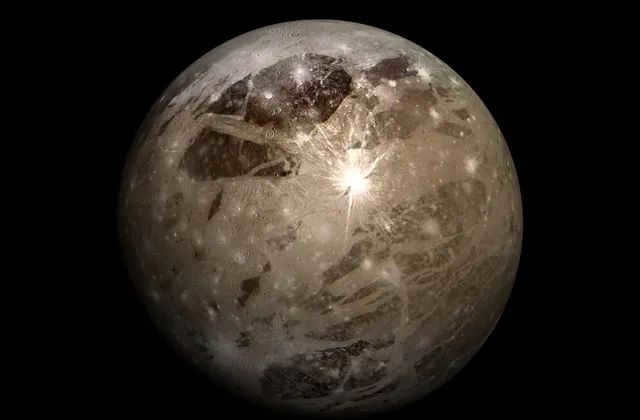
Ganymede, the largest moon of Jupiter and the biggest moon in our Solar System, has a mass twice that of the Moon and a diameter larger than Mercury, measuring 5268 km. This colossal celestial body is covered with a thick layer of ice made of water, and its surface temperature can drop as low as -203 °C. However, scientists believe that beneath Ganymede’s icy surface, there may be a hidden ocean of liquid water. Remarkably, Ganymede is the only moon in the Solar System to possess its own magnetic field, and stunning auroras can often be observed illuminating its poles. This remarkable moon was first observed by the renowned scientist Galileo Galilei through his pioneering telescope during the early 17th century.
Titan
can be rephrased as
The Largest Moon of Saturn
.
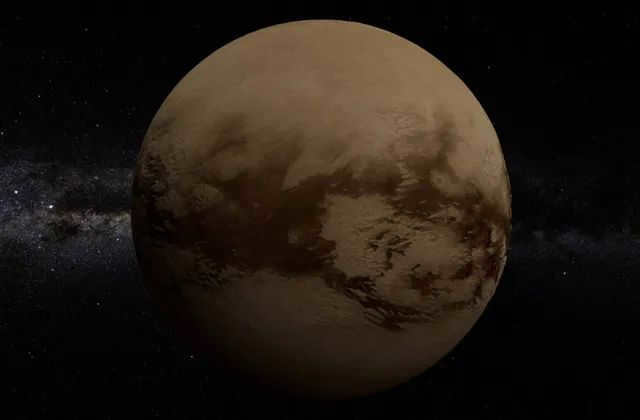
Titan, the massive moon of Saturn, is comparable in size to Ganymede, with a diameter exceeding 5000 km and a mass that accounts for 95% of the combined mass of the 82 satellites. Unlike any other moon in the solar system, Titan boasts a dense nitrogen-dominated atmosphere. Its frigid surface is adorned with mountains and ice volcanoes that eject water, ammonia, and methane. Just like Earth, Titan is home to oceans and lakes, but instead of water, these bodies of liquid harbor methane and ethane. Astronomers often draw parallels between Saturn’s largest moon and our early planet, speculating about the potential existence of simple life forms within its subterranean water channels.
There is much debate surrounding the number of planets in our solar system, particularly due to the controversial reclassification of Pluto. While scientists argue that it is no longer classified as a planet, many astronomy enthusiasts still consider it to be one. Below, I will provide an overview of the planets in our solar system, listed in order of their distance from the Sun.
Classification of celestial bodies
The classification of celestial bodies can be based on their origin, which can be either natural or artificial. In the case of artificial celestial bodies, they are man-made devices that are designed to rotate in a circular motion within their established orbits. These artificial celestial bodies serve various purposes, including monitoring weather conditions, transmitting radio signals, and determining the structure of the Earth’s surface.
By studying the number of satellites that each planet has, we can gain insights into their unique features and differences. In addition to revolving around the Earth, artificial satellites can also be found in space orbiting Mars and Venus. These satellites play a crucial role in transmitting important information to Earth stations, similar to how communication works on the Earth’s surface.
Naturals, as currently understood, refer to asteroids that have become trapped within the gravitational field of celestial bodies. Over time, these asteroids will acquire a circular orbit due to their rotation and will remain within the orbit of the planet to which they have become attached. Another theory suggests that even if a portion of a planet breaks off, it will still remain within the gravitational influence.
Recent evidence indicates that the Moon is one such object. Analysis of samples collected from its surface has revealed that its chemical composition closely resembles that of Earth. It contains the same compounds as our planet. Thanks to advanced telescopes with incredible power, scientists are able to determine which planets have the most and fewest satellites.
Guide on the subject: Selecting the Appropriate Approach to Remove a Profile on Mamba: Essential Tips, Email Notifications, the Proper Order of Deletion via the Mobile App. How to Erase from Multiple Dating Platforms Simultaneously.
Fascinating Trivia
Charon is accompanied by Pluto in its orbit. Interestingly, Pluto is approximately the same size as Earth, leading both objects to be classified as dwarf planets. Another intriguing celestial body is Titan, which revolves around Saturn and possesses a unique attribute – an atmosphere. This feature sets it apart from other similar celestial bodies composed of ice and rock. In addition to its atmosphere, Titan also boasts lakes of hydrocarbons.
Experts are not solely interested in the number of satellites that planets have. Rather, they are intrigued by what distinguishes each planet from the rest. Europa, for instance, is an exceptional formation that orbits Jupiter. It is primarily composed of ice, but beneath its thick surface lies liquid water.
Fluid heated by hot springs emerges from the depths of celestial bodies, giving rise to a multitude of deep-sea organisms on Earth. This phenomenon raises the intriguing possibility that extraterrestrial life may also exist.
Planetary satellites, which are natural space objects that orbit planets, have captured our attention due to their close proximity to our solar system’s planets.
Distinctive Characteristics of Natural Satellites’ Structure
Natural satellites are composed of either rock, ice, or a combination of both materials. Unlike planets, they lack a metallic core and possess a relatively low density.
The majority of satellites do not possess an atmosphere, which serves as a natural shield against meteorites. Consequently, their surfaces are riddled with numerous craters resulting from collisions with celestial bodies.
There exist satellites with exceptional surface attributes. Notably, Jupiter’s largest moons, Io and Europa, fall into this category. In brief, Io’s surface hosts active volcanoes that eject molten sulfur for hundreds of kilometers into space. On the other hand, Europa resembles a frozen sphere of ice, potentially harboring a liquid ocean beneath its icy shell.
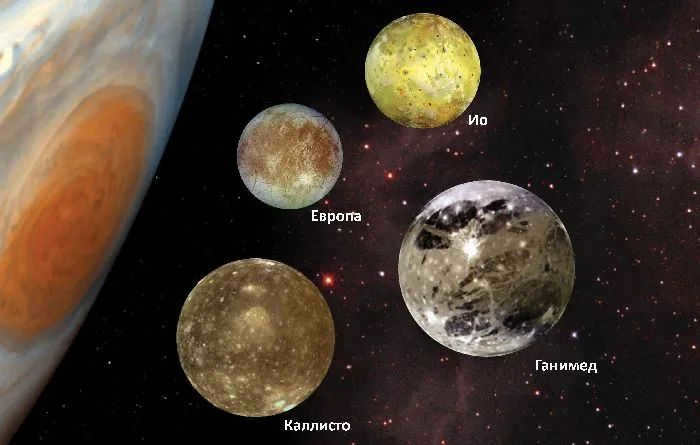
Figure 3: Satellites orbiting around Jupiter.
Among the various natural satellites orbiting around the planet Jupiter, Io stands out as a particularly fascinating one. Notably, Io is the sole satellite of any planet in our solar system where scientists initially observed active volcanoes. This unique characteristic makes it an object of great interest for space explorers.
Dwarf planets
These celestial objects are characterized by their small size and their distance from the Sun. This group of entities remains relatively unexplored due to their remote location. However, as technology continues to advance, scientists are gathering more significant data that is crucial for space exploration.
Pluto
Pluto is one of the smallest planets in our Solar System and was reclassified as a “dwarf” planet in 2006. It takes 248 years for Pluto to complete one orbit around the Sun and rotates on its axis every 6.5 days. Located in the Kuiper belt, Pluto is part of a region that contains many other dwarf planets.
In July 2015, the New Horizons spacecraft made a historic close flyby of Pluto, providing the first detailed images and valuable information about this cold world on the outskirts of our solar system. The mission also revealed new insights about Pluto’s moons.
Satellite Classification
There are two types of satellites: natural and artificial. Natural satellites are those that occur naturally, such as moons orbiting planets. On the other hand, artificial satellites are man-made spacecraft that are used to observe planets and other astronomical objects from space. These satellites serve various purposes, including weather observation, radio broadcasting, mapping the Earth’s surface, and military operations.
Related article: Sources of Scammers’ Phone Numbers: A Comprehensive Guide. How Scammers Obtain Your Personal Information.

The ISS is the biggest man-made satellite in orbit around the Earth
It’s worth noting that it’s not just the Earth that has man-made satellites, contrary to popular belief. Over a dozen man-made satellites orbit the two closest planets to us – Venus and Mars. These satellites enable us to study climate conditions, changes in topography, and gather other pertinent information about our celestial neighbors.
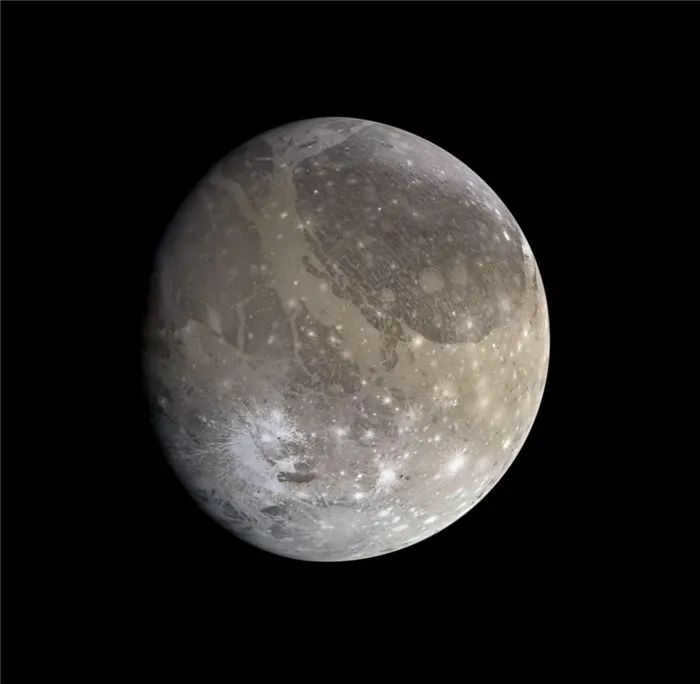
Ganymede holds the distinction of being the biggest moon in our solar system.
The second topic explored in this article is the fascinating world of natural satellites orbiting planets. Unlike their artificial counterparts, natural satellites are not man-made but are instead created by the forces of nature. Many of the satellites within our solar system are believed to have originated as captured asteroids, pulled into orbit by the gravitational force of their respective planets. Over time, these asteroids transformed into spherical bodies and began to orbit their capturing planet. Another theory suggests that some natural satellites are remnants of a planet’s formation that became separated for unknown reasons. Interestingly, this theory includes our own Moon as a natural satellite of Earth. Chemical analyses of the Moon have supported this hypothesis, revealing a near-identical chemical composition to our planet and the presence of the same elements.
Fascinating information about the most captivating satellites

Kalon, a picture taken by the New Horizons spacecraft.
The most fascinating of all the moons of the planets in our solar system is Charon, the moon of Pluto. Kalon is so large in comparison to Pluto that many astronomers consider these two celestial bodies as twin dwarf planets. Pluto is only twice the size of its moon.
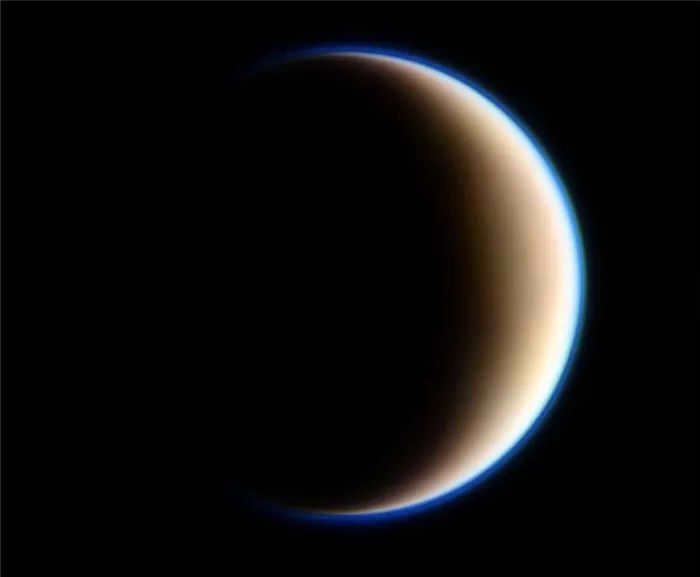
Titan, Saturn’s natural satellite, is an object that fascinates astronomers. The majority of satellites in our solar system are made up of ice, rock, or a combination of both, and as a result, they lack an atmosphere. Titan, on the other hand, boasts a dense atmosphere that is noteworthy for containing lakes of liquid hydrocarbons.
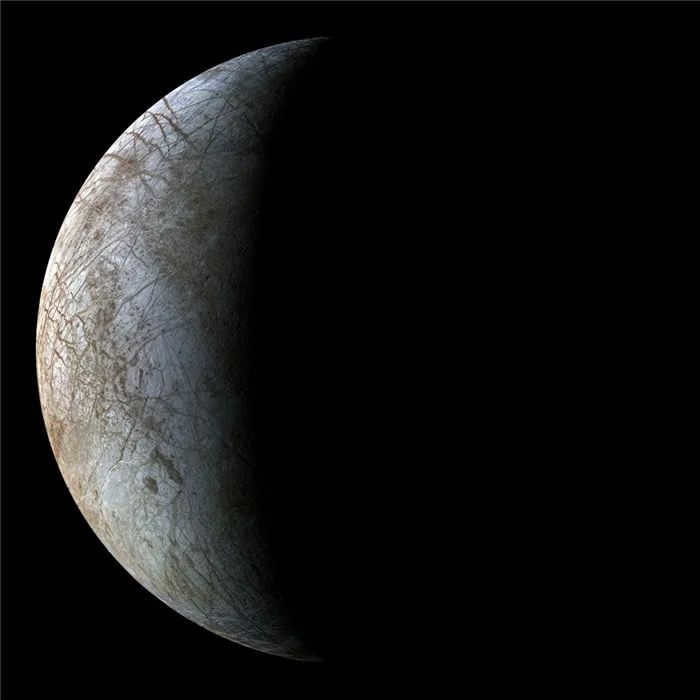

An image depicting Europa, one of the satellites orbiting Jupiter.
Europa, one of Jupiter’s moons, offers hope for the discovery of alien life. Below the thick ice covering the moon, there is believed to be an ocean containing hot springs similar to those found on Earth. Some deep-sea organisms on our planet thrive in such environments, leading scientists to speculate that similar life forms might exist on Europa.
